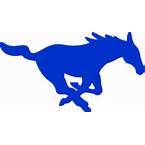
You are here
French Settlers in Morris

Morris has a very French background
Franchot, Rosseau, Renouard, de Villers, Perree, de Lay, Cockrell — the names of the first settlers in the hamlet of Louisville on the Butternut Creek read like the roster of a French village. As a matter of fact, that is exactly what the community which is now Morris was when it was founded in 1790 — a colony composed mostly of men and women who had fled the horrors of the French Revolution. When peace returned to France, however, most of the "emigrees in the wilderness" returned to their native land. Only one family, the Franchots, remained to become American citizens. The name of Louisville which the village bore in honor of Louis XVI was replaced by that of Morris and survives only in the designation of the local Grange unit. Although many were Protestant, these Frenchmen were not what are commonly called Huguenots. They were of that breed of Royalists who fled the Reign of Terror and founded such colonies as Asylum, Pa., Louisville and Muller Hill in Central New York and Leraysville, Chaumont and Theresa farther north. James Le Ray de Chaumont, a French land speculator, was the man who persuaded the refugees to settle hereabouts. Among his holdings were the Hillington tract of the Butler patent in the Butternut valley.
Charles Franchot, a substantial businessman in Lorraine who faced both financial and political difficulties, came to New York in 1789 with his sons, Augustin, Louis, Francois and Stanislas Pascal. Their destination was the French colony of Scioto on the Ohio River. There was Indian trouble there, however, and Le Ray persuaded them to settle in Otsego County. During the first winter Augustin and Francois died, and soon after the father returned to France. They had spent the winter at the home of Andre Renouard, who had a general store. In 1791 Renouard died and Louis Franchot married his widow. For eight years the brothers ran the store, a gristmill and a distillery and made extensive land purchases. Louis died about 1800 and Pascal took as a partner Volckert VanRensselaer of the Albany patroon family. The partners married the Hansen sisters, thus tying Franchot in with another of the old Hudson River Dutch families. In 1814 Pascal Franchot retired from the firm of Franchot and VanRensselaer and thereafter devoted his time to a number of other business enterprises. He succeeded Judge William Cooper as agent for Le Ray's Otsego land holdings and developed and sold his own large acreage. He was one of the prime movers in the building of the cotton mill in Morris in 1824. Pascal Franchot ( he had dropped the Stanislas years before) was a supervisor, county sheriff and judge of the court of common pleas as well as a charter member of the Masonic Lodge and one of the founders of Zion Episcopal Church. Pascal Franchot died in 1855, one of the wealthiest men in this part of the state. His descendants carried on the prominence of the family. Son Richard was a president of the Albany and Sus-quehanna railroad, a Civil War colonel and a congressman. A grandson, Nicholas V.V., made a fortune in New York state oil.
| Attachment | Size |
|---|---|
| 1.08 MB |
